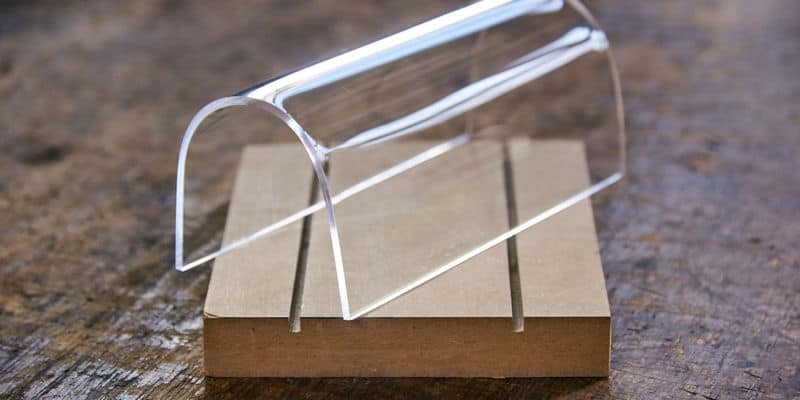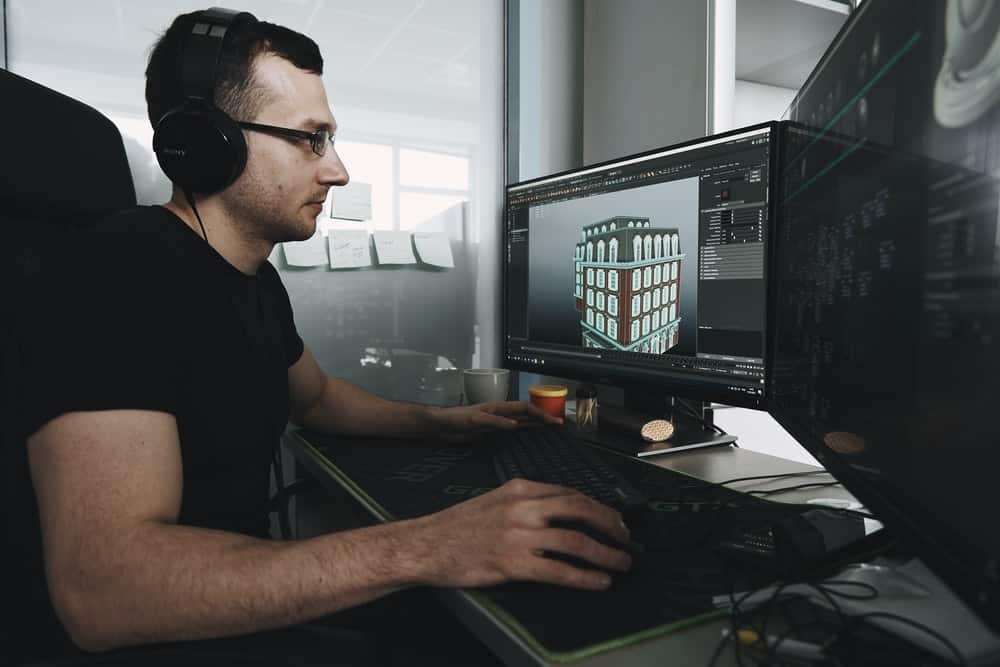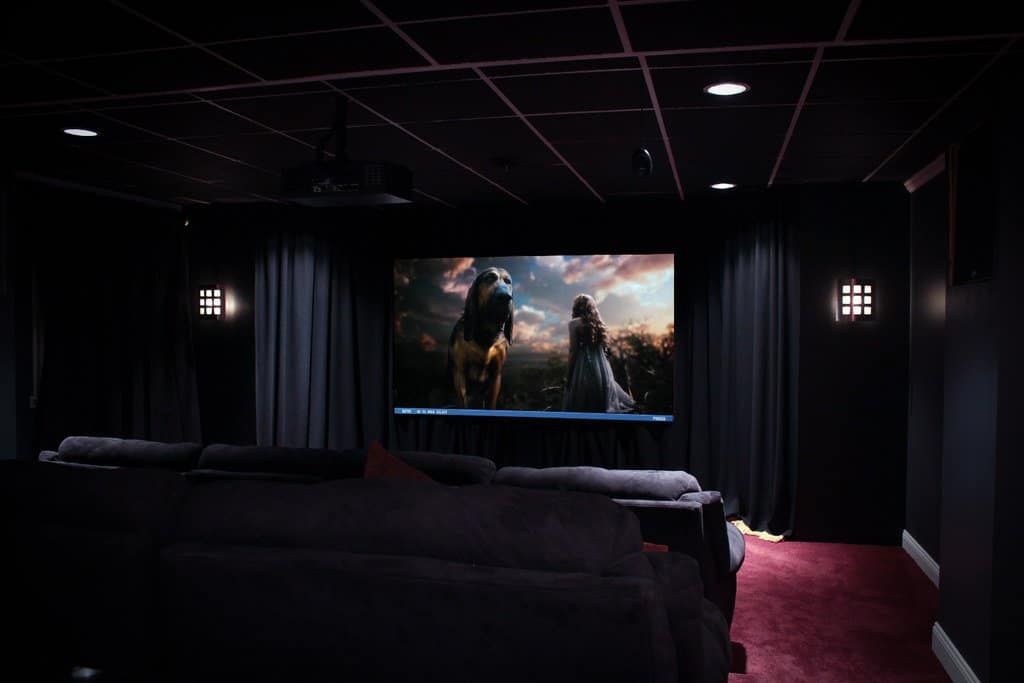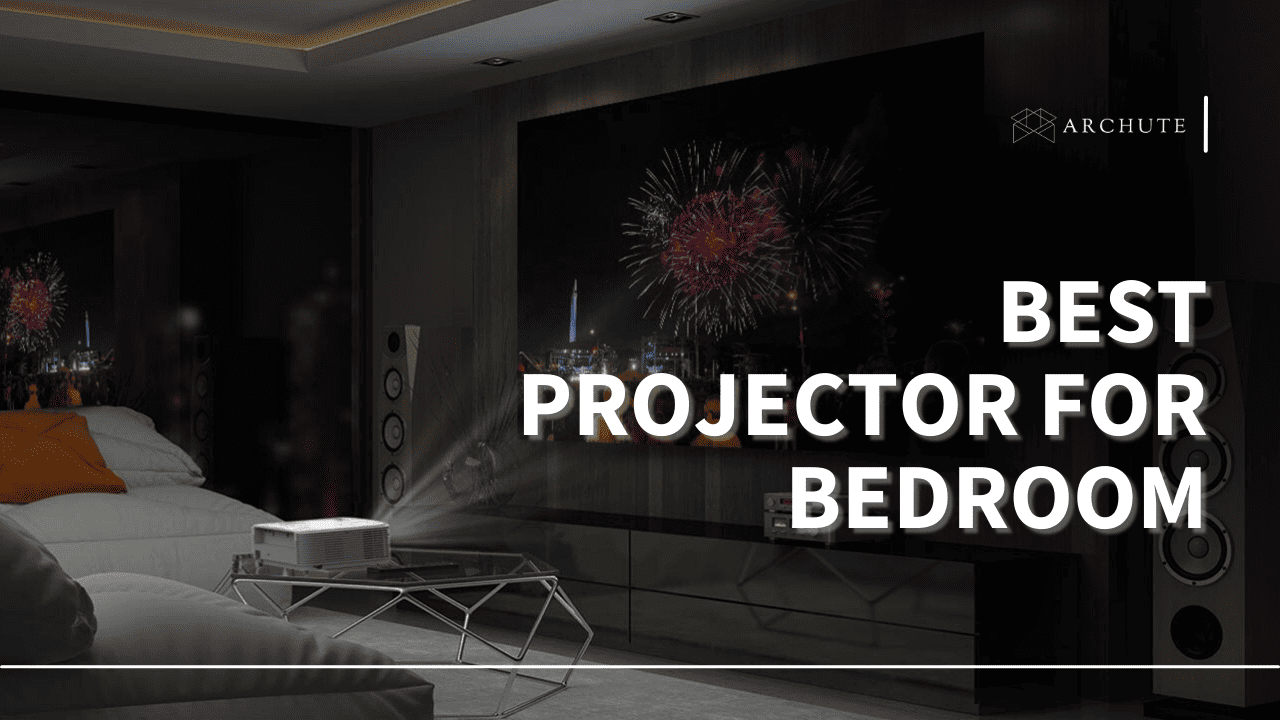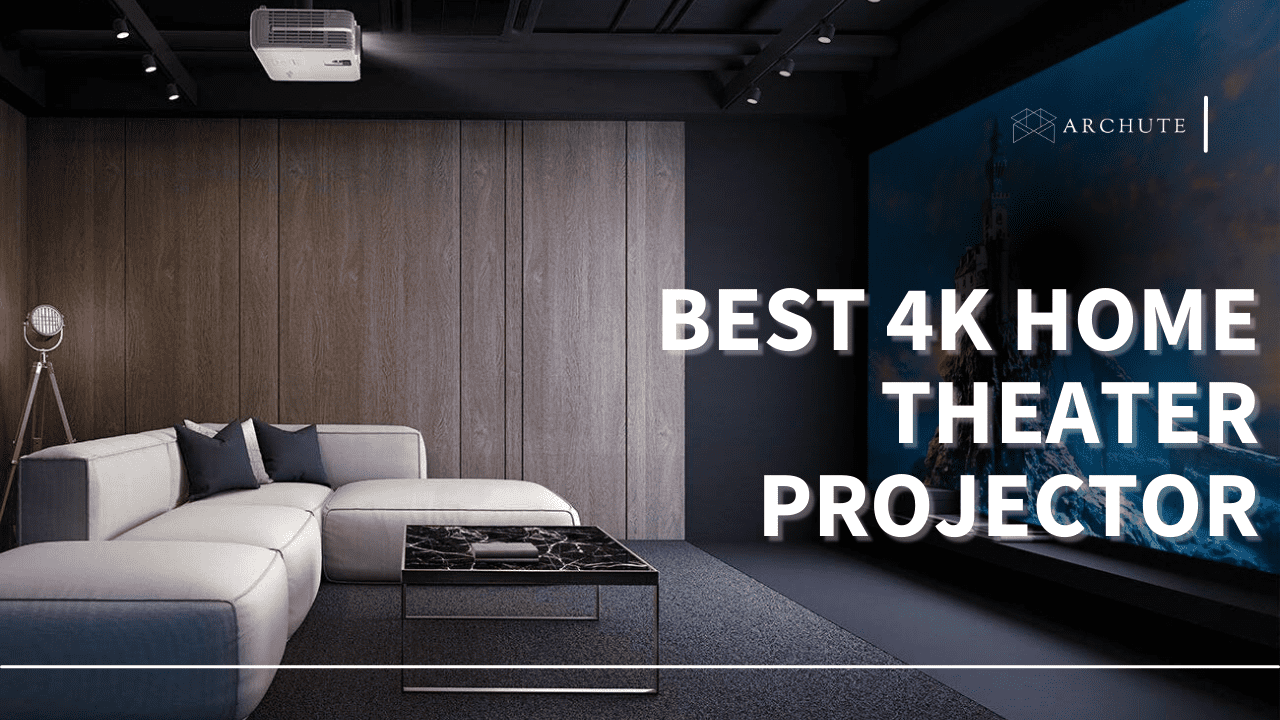Getting the best projector under $1000 doesn't have to be a strenuous process. In fact, it's never been simpler. We've selected the best projectors in the market that will give you high picture quality without making your pocket hurt.
We have projectors you can mount to your ceiling and others you can take on your next camping adventure. Let's dive in.
What Is the Best Projector Under $1000?
Rank | Product Image | Brand Name | Link |
|---|---|---|---|
1 | |||
2 | |||
3 | |||
4 | |||
5 |
1. BenQ HT2050A 1080P Home Theater Projector
- SUPERIOR PICTURE QUALITY: 1080p Projector with brightness of...
- HIGH RESPONSIVENESS: The specialized low input lag of 16ms and...
- WOW YOUR FRIENDS: Take the action to the big screen by projecting...
- FLEXIBLE CONNECTIVITY: Supports most media players, gaming...
- AWARD WINNING PROJECTOR: Highly Rated - Projector Central, Best...
We start off with an amazing projector that is perfect for hardcore gamers. If you want a projector with an input lag of 16 milliseconds, this is your projector. You will not believe the ultra-smooth gaming experience that's waiting for you.
On the other hand, if you are not a gamer but want a projector with which you can enjoy movie nights, this is still an excellent choice. The brightness of 2,200 lumens will ensure that you have clear images.
If you are worried about the rainbow effect, don't be. This projector under $1000 has a 6x color wheel which reduces the rainbow effect. Other features you'll like are 96% Rec. 709 color accuracy calibration and high native contrast.

Image Source: BenQ
The devices that this best projector under $1000 supports include gaming consoles, Macs, several media players, and mobile devices with input options like USB, HDMI, and more.
Look no further than this projector if you want value for your money. You will love the picture quality, brightness, and, most importantly, the input lag. So get ready for a splendid move night, and let us know how you like it.
Pros:
Cons:
2. Nebula Capsule II Smart Mini Projector
- Radiant Viewing: Cutting-edge DLP technology creates a stunning...
- Immersive Audio: Premium Scan-Speak transducers reproduce every...
- Android TV 9.0: Unleash a universe of entertainment possibilities...
- Ideal in the Home: Stay entertained at home with Capsule II's...
- Note: To use Netflix, please download the Nebula Manager app from...
Here's a portable mini projector that you don't want to miss out on. One thing you'll notice about this portable projector is that it looks like a speaker.
Imagine going out camping with your friends and them thinking that you've brought a speaker, only to be pleasantly surprised when you power on your mini projector.
The Nebula Capsule II has screen brightness of 200 lumens and a resolution of 720p. This brightness level makes this projector great for low ambient light conditions but not the best for bright ambient light conditions.

Image Source: NEBULA
These best projectors are great for small-sized families and come with incredible sound quality. You also get to enjoy Android TV 9.0, allowing you to enjoy Android TV apps such as Hulu, YouTube, etc.
However, if you want to use Netflix, you'll need to download the Nebula Manager app and use the Nebula Connect app on your smartphone to control Netflix.
Pros:
Cons:
3. Optoma HD26 1080p 3D DLP Home Theater Projector
- Screen Size Range: 71-inches from 8 feet; 107-inches from 12 feet
- Brightness: 3200 ANSI Lumens
- Contrast Ratio: 25,000:1; Keystone Correction: Yes, Lens Shift:...
- Warranty: 1-Year Limited Parts and Labor, 90-Days on Lamp
- Inputs: 2 x HDMI (1.4a 3D support) plus MHL, Audio Out 3.5mm, 12V...
This projector under $1000, comes with a 1080p resolution and a screen brightness of 3200 lumens. So if you don't like our first pick when it comes to gaming projectors, this is another great option.

Image Source: Optoma
This DLP projector has 3D imaging technology for a more immersive experience. This is a major contrast from our previous pick, which does not have 3D capabilities. This projector comes very close if you're looking for excellent picture quality.
This best projector's HD26 color technology feature ensures that you get amazing video quality and sharp and bright images.
Pros:
Cons:
4. XGIMI MoGo Pro Portable Projector
- 1080p Image with 300 ANSI Lumens: An advanced DLP lamp delivers...
- Built-In Battery: MoGo Pro's strong built-in battery provides at...
- Android Tv: Download apps directly to the projector from Google...
- Auto Keystone Correction: Autofocus and 40° Auto Keystone...
- Harman Kardon Sound: Phenomenal audio powered by two 3W built-in...
Here's another portable projector that you'll enjoy. Just like our second pick, you can take this projector wherever you like. However, compared to our second pick, this projector has some advantages.
For example, instead of a 720p resolution, you get a 1080p resolution. You also get 300 ANSI lumens compared to the 200 lumens that it has. Nonetheless, both these best projectors are within the same price range and will serve you well.

Image Source: XGIMI
This portable projector comes with a built-in battery that can allow you to enjoy two hours of entertainment. You also get to enjoy the Android TV features that come with this projector. For example, you get access to apps such as YouTube, Hulu, Disney, and more with this projector.
Pros:
Cons:
5. Optoma HD28HDR 1080p Home Theater Projector
- NEXT GENERATION TECHNOLOGY: Enjoy clear detailed 1080p...
- HDR COMPATIBLE: HDR10 technology (with 4K input) enables brigher...
- HIGH BRIGHT & COLORFUL IMAGE: Enjoy an incredible 4,000 lumens of...
- FAST RESPONSE TIME: Enhanced Gaming Mode enables lightning-fast...
- MORE IMAGE DEPTH: Dynamic Black technology provides more depth to...
Finally, we have this projector that enables deeper black levels and brighter whites thanks to the HDR10 technology it comes with. In addition, these best projectors have a brightness level of 4,000 lumens which makes them great for well-lit rooms.

Image Source: Optoma
The 1080p resolution means that you'll be getting good video quality. Although this isn't a budget projector and is, in fact, one of the most expensive on the list, you can be sure that you're getting a good product.
The one thing that this projector has over all the other projectors on this list is the 4,000 lumens of brightness. No other projector can hold a candle to the level of brightness that this projector brings.
Pros:
Cons:
What to Consider When Getting the Best Projector Under $1000
1. Room Size
One of the most important factors when choosing a projector is the size of the room you're predominantly going to be watching in. Why? Because you'll need to choose a projector with the right throw for your room.
Throw is the distance that your best projector under $1000 needs to be away from the screen to produce a specific size image. Therefore, before you click on buy, you need to know the throw distance you're going for.
There are long-throw projectors and short-throw projectors. If you have a small room size, you'll need a good short throw projector.
For example, you can get a high-quality short-throw projector that can produce a 100-inch (diagonally) image size from a distance of about 6 feet.
Therefore, depending on the room size you're working with, you can either get a long-throw, short-throw, or ultra-short-throw projector.
Keep in mind, though, that the price increases as the throw distance gets shorter. Also, note that some short-throw projectors are not as sharp as their non-short-throw counterparts.
Therefore, consider if you are willing to make this trade-off as you choose the type of projector you want.
2. Type of Projection Technology
Although you may not want to go into the details of how your projector works, knowing the various types of projection technologies can help you choose the right one for you. Let's look at a few of them.
a) DLP (Digital Light Processing)
DLP projectors create images using a chip made of tiny microscopic mirrors and a spinning color wheel.
The DLP projector produces sharp images, has 3D capabilities, a better response time, and doesn't need any filters.
The downside is that DLP projectors can produce the rainbow effect. However, this rainbow effect isn't always visible to everyone. Therefore, this is a splendid option if you don't mind this effect and want a good budget-friendly projector.
b) 3LCD (Liquid Crystal Displays)
3LCD projectors don't have the rainbow effect that the DLP projectors have. However, they are more expensive than the DLP projectors and can require constant filter maintenance.
These best projectors also have better color reproduction and color saturation. If you want a great home theater projector that you can use to watch movies with the family, consider getting one with this projector technology.
c) LCoS (Liquid Crystal on Silicon)
LCoS projectors are the most expensive of the bunch. However, these projectors are known for their amazing black levels, great color qualities, accurate performance, and less visible pixel structure in the group.
If money is not a major problem and you desire the best home theater projector, consider getting one that uses LCoS technology
3. Noise Levels
Although this factor may not seem as important as the rest, trust us when we say it's important. Imagine you've had a long day, and now you're finally seated at your favorite spot, getting ready to watch the movie you've been anticipating for months using your home theater projector.
However, your attention keeps getting drawn to this annoying sound coming from your projector. You may not have noticed it before, but because today your nerves are a bit on edge, you can hear it.
Wouldn't that dampen the whole mood? This is why paying attention to projector noise levels is important. We recommend noise levels not higher than 30 dB for a good relaxing experience.
4. Display Resolution
When buying a projector, you need to decide if you want a 1080p or a 4K projector. Of course, if you want the best resolution, 4K is the way to go, but you'll need to pay extra for it.
5. Brightness
If you're used to watching movies and shows on a 75-inch TV screen, you'll likely want the same level of brightness when it comes to your projector without a reduction in image quality.
Therefore, you should check the ANSI (the American National Standards Institute) lumens of the projector you want to get.
The higher the lumen value of the projector, the brighter the image it will produce. However, just because you want good brightness doesn't mean that you have to get the best projector with the highest lumen value.
You need to consider the brightness of the room you'll be watching in. For example, if the room you'll be using your project in has dim lighting, you don't have to choose the projector with the brightest capability.
On the other hand, if the room has lots of ambient light, you'll need to choose a projector with a high lumen. This will allow you to have sharp images with a high contrast ratio despite the ambient light in the room.
6. Gaming
If you're buying a gaming projector, the input lag is the most crucial factor to consider. An input lag of less than 20 milliseconds is ideal for a hardcore gamer.
However, if you are an average gamer, a typical gaming projector should work just fine. It provides you with an immersive experience that cannot be replicated by even the best TVs under $1000.
If you decide to go with a 4K projector, one thing to note is that these projectors generally have an input lag of 40 milliseconds. This isn't bad, but it can be too slow if you're used to a faster response.
How to Set Up A Projector: The Ultimate Guide
1. Carefully Unbox
Although you may be very excited to start watching movies with your new projector, resist the urge to remove it and plug it in right away. This is because you might miss some crucial steps in the installation process.
The best strategy is to take out the instruction manual and go through it until you fully understand what every part is and where it goes. This will prevent a scenario where you miss seeing a second remote that you'll need down the line.
Another reason why completely unboxing is important is that you can alter anything you want seamlessly at this point compared to when you've already mounted your projector. Therefore, this is time time to know the ins and outs of your projector.
Check whether all the feet screw in and out to avoid a future scenario where you want to adjust the image on the screen but can't adjust the feet. Another thing to check is the inputs. Ensure that you know what the multiple HDMI inputs are for if your projector has more than one.
2. Choose the Right Placement
Getting the right placement for your projector is just as important as choosing the right one. Once you've set up your screen, you want the front of your projector to be as parallel to it as possible.
If you need to mount your projector to the ceiling or wall, ensure that you ready the right mounting equipment. Some measurements to take before you mount your projector include the height of the screen and the height of the projector.
You need to compare the two to ensure that you'll be able to project the clearest and most focused picture quality. Once you're sure that everything is level, you can now start the mounting process.
The best part about buying a high-quality projector is that it comes with instructions on how to get the perfect 100-inch screen. This is also why reading the instruction manual at the beginning is important.
Keep in mind that if you want to prevent neck strain or discomfort, ensure that your projector is at least two or three feet off the ground.
Once you've found the position of your screen and projector, you can now consider the position of other accessories, such as the speakers. Nonetheless, ensure that you follow the guidelines or instructions that come with your projector for a smooth process.
3. Ensure Adequate Airflow
As you are choosing the placement for your projector to get the best image quality, you also need to consider heat management. Projectors emit an equal amount of light and heat. Therefore, ensure that there's enough airflow in the room to cool it down.
The last thing you desire is for the projector to overheat and shut down in the middle of a movie. Not only would this be inconvenient, but it would also be bad for the projector. You also don't want to reduce the lamp life or have a fire hazard on your hands.
In addition to ensuring proper airflow, you also need to ensure that you're not placing your projector at a place where the heat will make you uncomfortable as you watch. For example, having the projector right behind your head can be uncomfortable.
If you can get professionals to come and build a fan-vented cabinet for your projector, the better. The fan can also be something to consider as you get your projector. Assuming you'll have already decided where to place your projector, you'll be able to choose a projector that has fans on the front and sides or just the front.
4. Connect the Other Equipment
Once you know the position of your projector, the next step is to connect the sources of entertainment. You can either do this after you've mounted your projector or before. Some of these pieces of equipment include surround sound systems, gaming systems, streaming devices, and other equipment you need.
You need to know how to run the lines and make the connections. This is an important part because having lines and wires running around your room can be unsightly and uncomfortable. Therefore, you want to consider the best paths to take and how to run the lines in a tidy manner.
If making your room tidy is a priority, consider taking advantage of your room's architecture. Some elements you can take advantage of include crown molding, pillars, rafters, and even the rugs.
You can use cable ties and brackets or zip ties to keep everything organized and secure. Nonetheless, you must ensure that the cables don't pose a tripping threat. If you feel like this process is a lot of work, consider getting a professional to do the work for you.
It may cost you something extra, but at least you know that you'll get the job done well.
5. Double Check Everything
Before you call it a day, do a double-take to ensure that everything is in order. Once you've permanently positioned your projector and speakers, the next step is to ensure that no stray cables or cords are lying around.
If you mounted the projector to the ceiling, check the ceiling to ensure there are no hanging wires or cords. Another thing to check is that all the equipment has been hooked properly.
The good thing about doing a double-take is that you'll be able to quickly find any problems and nip them in the bud before they become bigger. This last process also gives you peace of mind because you won't go sit down to watch a movie while worrying about the project tumbling to the floor.
Once you're sure that everything has been installed properly, the next step is to test how the entire system works. Switch on your projector and set up a movie you've watched. Look at the picture quality, comfort level of watching from where you are, and the sound quality.
Do what you normally would do to allow you to make any adjustments now instead of when you've actually sat down for some entertainment.
Once you're sure that everything works well, you can sigh in relief and confidently go about your business, knowing that the projector business is over.
Final Thoughts
Which projector under $1000 did you like the most? If you're into gaming, our first and fifth picks are perfect for that, with low input lags. Consider our second and fourth options if you want a more portable option.













